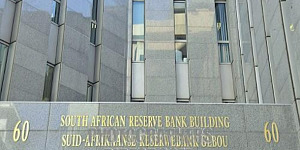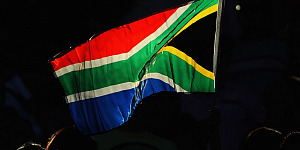South Africa's central bank lowered its benchmark repurchase rate by 25 basis points to 6.50 percent amid an economic slowdown and said future policy decision will continue to be highly dependent and sensitive to risks to the outlook while it seeks to anchor inflation expectations near the midpoint of its target "in this persistently uncertain environment."
It is the first rate cut by the South African Reserve Bank (SARB) since March 2018 and follows a rate hike in November 2018.
While SARB Governor Lesetja Kganyago said the risks to growth and inflation were balanced in the near term, he is clearly concerned about the possible negative impact of any escalation of trade tensions and the absence of structural reforms - that are beyond the scope of monetary policy - that are limiting investment prospects.
The rate cut was widely expected by investors and economists after the economy shrank by 3.2 percent quarter-on-quarter in the first quarter, inflation is steady and inflation expectations have declined, and the exchange rate of the rand has risen.
SARB's quarterly projection model shows one cut to the repo rate by the end of the fourth quarter.
South Africa's inflation rate has remained around the midpoint of its target range of 3.0 to 6.0 percent with the latest forecast lowered slightly to an average 4.4 percent for this year, down from 4.5 percent seen in April.
For 2020 and 2021 the inflation forecast is unchanged at 5.1 percent and 4.6 percent, respectively, with inflation seen peaking at 5.4 percent in the first quarter of 2020.
In May South Africa's headline inflation rate rose to 4.5 percent from 4.4 percent in April.
"The MPC welcomes the continued downward trend in recent inflation outcomes and the moderation in inflation expectations of about one percentage point since 2016," said Kganyago, who this month was appointed for a second 5-year term after a bruising row within the governing African National Congress party (ANC) over SARB's mandate and role in the economy.
After shrinking in the first quarter, mainly due to electricity shortages and labour strikes, SARB expects a rebound in the second quarter though low business confidence remains a concern.
SARB lowered its outlook for growth this year to an average 0.6 percent from May's forecast of 1.0 percent, with the outlook for 2020 and 2021 unchanged at 1.8 percent and 2.0 percent, respectively.
Since the monetary policy committee's last meeting in May, South Africa's rand has risen 3.3 percent against the U.S. dollar but on improved sentiment towards riskier assets, SARB still considers it slightly undervalued, with domestic growth and fiscal risks high on investors' list of concerns.
The rand rose in response to SARB's rate cut to trade at 13.89 to the U.S. dollar, up 3.9 percent this year.






































